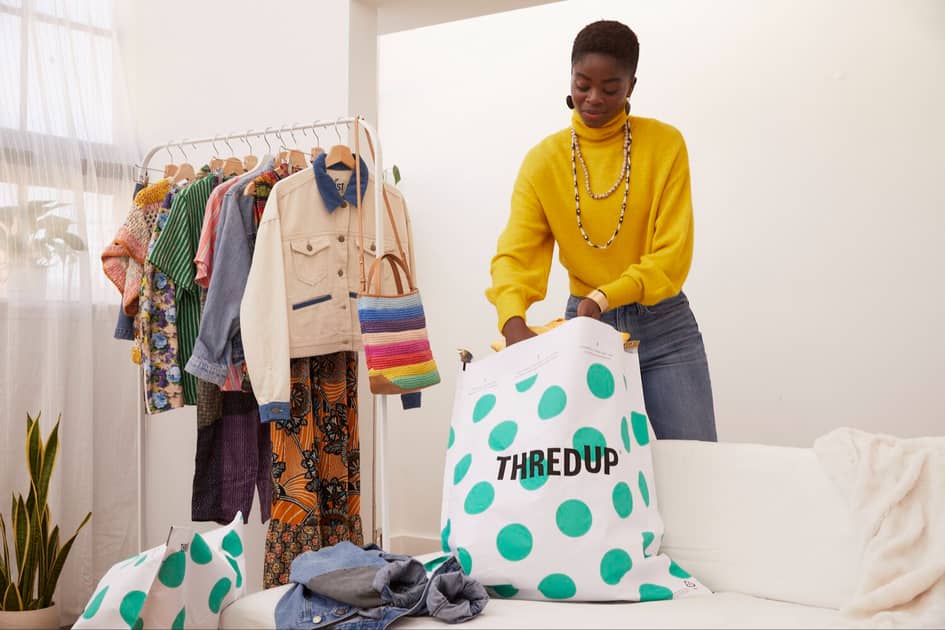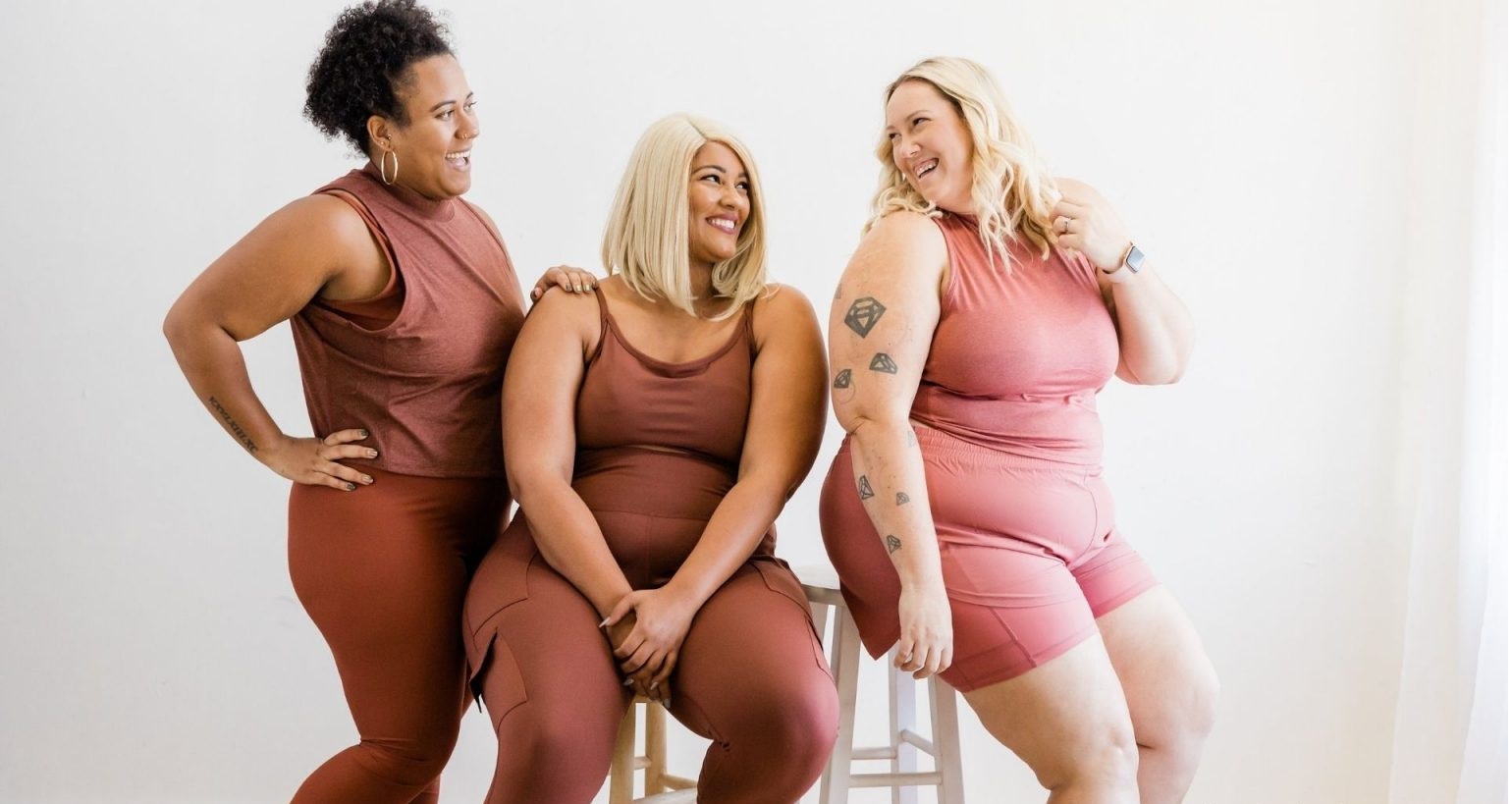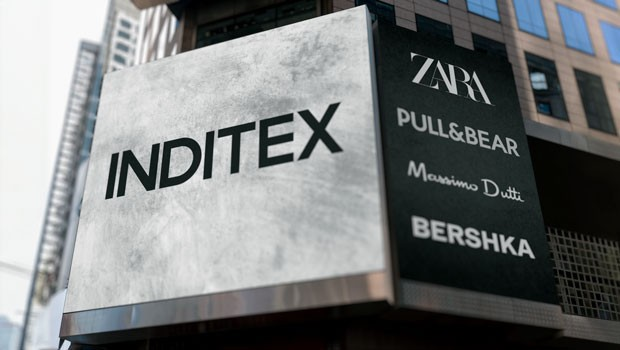FW

In a surprising turn of events, online secondhand fashion giant ThredUp has announced its decision to exit the European market. This comes as a shock to many, considering the rising popularity of sustainable fashion and the thriving secondhand market in Europe. The question on everyone's minds is: Why?
ThredUp's CEO James Reinhart attributed the exit to several factors, primarily the company's inability to achieve profitability in Europe. The European operations have consistently struggled, even with substantial investment and support from the US team. Q2 2024 saw an 18 per cent drop in European revenue, coupled with a negative adjusted EBITDA margin, signalling a challenging business environment.
Is Europe not ready for a secondhand platform?
The short answer is no. The secondhand clothing market in Europe is booming. Consumers are increasingly embracing sustainable fashion choices and seeking affordable alternatives to fast fashion. However, the market dynamics in Europe differ significantly from those in the US, posing unique challenges for ThredUp.
Some of the major challenges include:
Strong competition: Europe has a robust network of local secondhand stores and online platforms. ThredUp faced intense competition from established players, making it difficult to gain a significant market share. Also while the US has embraced secondhand shopping as a trendy and sustainable option, European consumers have been slower to adopt this mindset. Thrifting is often still associated with necessity rather than choice.
Cultural differences: Europeans have distinct shopping habits and preferences. ThredUp's US-centric model might not have fully resonated with the European audience.
Logistics and infrastructure: The fragmented nature of the European market, with its diverse languages and regulations, posed logistical challenges for ThredUp which they may have underestimated.
Table: Comparison of secondhand clothing markets US vs Europe
|
Market |
Market Size (2023) |
CAGR (2023-2028) |
Projected market size (2028) |
Key growth drivers |
Challenges |
|
US |
$30 billion |
12.50% |
$51 billion |
Sustainability concerns, growing acceptance of secondhand, strong online presence |
Price sensitivity, competition from fast fashion |
|
Europe |
$25 billion |
10% |
$40 billion |
Increasing environmental awareness, rising disposable incomes, growth of online resale platforms |
Cultural barriers, logistical complexities, fragmented market |
As the table shows, the European secondhand market is substantial and growing at a healthy pace. The increasing focus on sustainability, coupled with the convenience of online platforms, is driving this growth. However, cultural barriers and logistical complexities remain challenges that businesses need to address.
Key takeaways
• ThredUp's exit highlights the complexities of expanding a successful US-based business model into the European market.
• Despite the setback, the secondhand clothing market in Europe remains promising, driven by increasing consumer awareness about sustainability and the desire for affordable fashion.
• Local players with a deeper understanding of the European market and its unique challenges are likely to thrive.
While ThredUp's departure is a setback, it's not the end of the road for secondhand fashion in Europe. The market is ripe with opportunities for innovative platforms that can adapt to local preferences and navigate the unique challenges. As consumers continue to prioritize sustainability and affordability, the secondhand clothing market in Europe is poised for significant growth in the coming years.

The recently released Cotton Incorporated 2024 Lifestyle Monitor underscores a growing consumer preference for comfortable, sustainable clothing choices. The findings highlight a dynamic shift in consumer attitudes and behaviors towardsa apparel purchasing, significantly impacting the textile and fashion industry.
Comfort, sustainability top reason popularity
The report indicates a marked increase in consumer prioritization of comfort when selecting clothing. A significant 85 per cent of respondents indicated comfort as a key factor influencing their apparel purchases. This trend is particularly evident among younger consumers, suggesting a generational shift in fashion preferences.
Additionally, the 2024 Lifestyle Monitor shows increasing consumer awareness and concern for environmental sustainability. Over 60 per cent respondents expressed a preference for clothing made from natural fibers, citing environmental impact as a primary reason. This growing eco-consciousness among consumers is further reflected in the report's findings on shopping habits, with nearly half of all consumers actively seeking information about the sustainability of their apparel choices.
"The results of our survey clearly show that sustainability is becoming a key factor in consumers' decision-making process," said Kim Kitchings, Senior Vice President of Consumer Marketing at Cotton Incorporated. “Brands that can effectively communicate their commitment to sustainable practices will likely gain a competitive advantage in the marketplace."
The survey also shed light on specific aspects of sustainability that are particularly important to consumers. For example, 65 per cent respondents expressed concern about the use of harmful chemicals in clothing production, while 55 per cent were worried about the amount of water used in the manufacturing process. When asked about preferred sustainable materials, cotton emerged as a top choice, with 70 per cent of consumers considering it to be a sustainable fiber. This preference for natural fibers over synthetic alternatives highlights the growing demand for eco-friendly materials.
These study’s findings point towards a future where consumer choices are increasingly driven by a desire for both personal well-being and environmental responsibility. This evolving landscape presents both challenges and opportunities for the textile and fashion industry, necessitating a greater focus on sustainable practices and the development of comfortable, eco-friendly clothing options.
Cotton prices in Brazil dropped below BRL 4 (approximately $0.71) per pound by the end of August this year as availability increased in the domestic market while prices in the international market declined.
On Aug 25, the National Supply Company (CONAB) had completed cotton harvesting in 76.1 per cent of the total area harvested nationwide. Favorable dry and warm weather conditions supported harvesting activities in Mato Grosso, Brazil's largest cotton-producing state, according to the latest bi-weekly report by CEPEA.
However, Brazil’s cotton exports declined by 53.5 per cent to 77.7,000 tons in August 2024 as compared to the 167.2,000 tons exported in August 2023. Despite this, the daily export average slightly increased by 0.77 per cent to 4.57,000 tons, compared to 4.54,000 tons per day in the same month last year, according to data from the Secretariat of Foreign Trade at the Ministry of Economy (SECEX/ME).
Fuelled by FTA negotiations with the UK and the European Union, the Indian textile industry is poised to grow in 2024, according to a report by B&K Securities. However, logistical challenges and the need to meet stringent sustainability norms may pose short-term obstacles in this growth.
Export demand in the ready-made garments (RMG) sector is anticipated to improve significantly in 2024. While domestic demand may remain moderate due to reduced discretionary spending and overstocking from the previous fiscal year, a recovery in export demand looks promising. The domestic market could see a boost in the second half of FY25, driven by an increase in wedding dates and festive seasons, although price realizations are expected to rise only marginally.
Export growth in the RMG sector is likely to be propelled by several factors, including restocking by Western retailers, higher demand for spring-summer collections, and a general uptick in retail sales. Additionally, anticipated interest rate cuts in the US are expected to further stimulate demand. India's RMG exports will benefit from stable cotton prices and uninterrupted supply, enhancing the country's cost competitiveness on the global stage.
The ongoing crisis in Bangladesh will provide a temporary advantage for Indian exporters. However, this benefit is expected to be short-lived due to differences in product portfolios and Bangladesh's trade agreements with the European Union. In the medium to long term, India could see more significant gains as global buyers diversify their supply chains away from China and Bangladesh, particularly as Bangladesh grapples with rising wages and the impending loss of its Least Developed Country (LDC) status by 2029.
Largely driven by strong consumer spending in the United States, the home textiles segment is also expected to continue its growth trajectory. Indian players have been steadily increasing their market share in the US, supported by the China+1 strategy adopted by major retailers to diversify their supply chains. India's competitive edge in raw material costs and increased domestic capacity are likely to sustain its dominance in the US home textiles market.
Despite the positive outlook, the industry faces near-term challenges, including logistical disruptions due to the Red Sea crisis and uncompetitive domestic cotton prices. Moreover, as sustainability becomes a major focus in Western markets, Indian textile companies will need to invest in compliance with evolving norms to remain competitive.
While the political crisis in Bangladesh might not significantly impact overall India-Bangladesh trade, it poses a serious threat to India’s cotton sector. India exports $2.4 billion worth of cotton annually to Bangladesh, making it a crucial market for Indian cotton producers.
As per data from the Ministry of Commerce, Bangladesh’s share in India’s total cotton exports has grown from 16.8 per cent in FY13 to 34.9 per cent in FY24. Raw cotton alone accounted for a quarter of India’s total exports to Bangladesh in FY24.
India’s textile industry is beginning to feel the strain as the decline in orders from Bangladesh disrupts the supply chain. While India has started receiving fresh inquiries for garment production, exports of Indian cotton to Bangladesh are on the decline, according to industry executives. This trend is particularly concerning given Bangladesh’s vital role as a global textile hub.
Earlier this month, Chandrima Chatterjee, Secretary General, Confederation of Indian Textile Industry (CITI), noted, although western companies are considering India as an alternative sourcing destination, the Indian textile industry faces challenges in meeting both the qualitative and quantitative demands that Bangladesh previously fulfilled.
However, India’s Production Linked Incentive (PLI) scheme and the PM Mitra scheme are positive steps toward expanding the domestic capacity, she pointed out. Growing concerns in western markets about human rights issues in Bangladesh also make India a more appealing alternative, she added.
Employing over four million workers, Bangladesh’s $45 billion clothing industry was already under strain before the recent political turmoil. According to S&P Global, the industry has been struggling with a weakened electricity generation infrastructure, rising input costs due to the Russia-Ukraine war, and adverse weather events. The situation in Bangladesh remains a significant international concern, as evidenced by discussions between Indian Prime Minister Narendra Modi and U.S. President Joe Biden on the matter.
India’s Finance Minister Nirmala Sitharaman also acknowledged the impact of the situation, noting, the Indian garment and knitted fabric sector is experiencing "a bit of uncertainty" due to the developments in Bangladesh.
India Hand Made Collective (IHMC) organised a three-day Natural-Dye Handmade Exhibition to provide visitors with a platform to interact directly with artisans.
Held from Aug 30-Sep 01, 2024 in Bengalaru, the exhibition featured several workshops focusing on cotton, and handspun and hand woven fabrics, These fabrics were dyed naturally in floral eco print, block prints, kalamkari, Lambadi embroidery, Bengal Muslin and Jamdani weaves, observed Mahima Thangappan, Co-ordinator, IHMC,
The products displayed at the exhibition included saris, fabrics, women’s wear, menswear, home decor, accessories, terracotta crafts, bamboo crafts, banana fiber crafts, coconut shell crafts and cloth diapers. The exhibition aimed to promote a sustainable lifestyle and fashion and work with only biodegradable cotton, Thangappan added.
IHMC was started in 2020 by Ananthoo, Tula Organic Garments alongwith Tara Aslam, Nature Alley; Dr Lalitha, Porgai Artisans Association; Arup Rakshit, MG Gramodyog Sewa Sansthan Foundation and Late Karuna Tai Futane, Gram Sewa Mandal, Wardha.
The organisation works with artisans and craftsmen. It mainly generates revenue by organising various exhibitions. During the COVID-19 lockdown, it shifted to virtual exhibitions and united as a collective to reduce carbon footprints.
British luxury footwear and accessories brand Kurt Geiger has collaborated with model and actress Emily Rataj kowski, who will be the face of the brand's Fall 2024 campaign, featuring the new ‘Chelsea’collection.
Founded in 1963, Kurt Geiger has since evolved into a fashion powerhouse, thanks to a simple yet ingenious concept: ‘Luxury at a sane price.’ The brand offers a refreshing alternative with bold, colorful, and instantly recognisable designs—without the hefty price tag. According to a report by Women's Wear Daily (WWD), the brand's sales increased by 10 per cent last year to $466 million while profits soared by 34 per centto $50 million.
Neil Clifford, CEO, says, the brand combines its vibrant, colorful and recognizable designs with its British DNA and an amazing price offer.
In the past five months, Kurt Geiger has experienced meteoric growth in the US, with a staggering 104 per cent increase in sales. The brand plans to open several new stores across the US in the near future.
A global leader in viscose staple fiber (VSF), Birla Cellulose has teamed up the world’s largest spandex manufacturer, Hyosung, to unveil an innovative collection of vibrant cellulosic knit fabrics. This new range has been launched by integrating Creora Color+ Spandex, which blends the rich, vibrant colors of cellulosic fibers with the flexibility of spandex.
The collaboration focuses on the blend of science with style, says Abir Chakrabarti, Joint President, Grasim Industries, which operates Birla Cellulose plants in India under the Aditya Birla Group. The group’s research and development teams have worked diligently to perfect the balance between spandex’s elasticity and dye absorption, reimagining traditional processes to create a fabric that maintains its stretch while embracing a full spectrum of color.
Typically, spandex does not absorb dye well, making it difficult to achieve uniform color when blended with natural fibers like cotton, rayon, and modal. To overcome this challenge, Hyosung developed Creora Color+ Spandex, a reactive dyeable spandex designed specifically for natural blended materials. This breakthrough ensures deep, rich color coverage in natural and cellulosic fabrics without grin-through, making it ideal for use in intimate apparel, activewear, and ready-to-wear brands. Dyeable spandex knit fabrics open up new possibilities for designers and creators across various applications, avers Dinesh Keswani, Director - Technical and Business Development - India, Hyosung. By collaborating with Birla Cellulose, Hyosung reiterates its commitment to provide comprehensive textile solutions that address complex material challenges across the entire value chain, he adds.
The new fabric line also represents a significant step toward sustainability. As Chakrabarti affirms, more than just style, the collection focuses on reducing environmental impact. The man-made cellulosic dyeable spandex knit fabric enablesGrasim to not only minimise water usage, energy consumption, and waste but also enhance shade depth, he adds.
Global Standard has launched its #BehindTheSeamsCampaign for the second consecutive year in September 2024.
Spanning the entire month, the campaign focuses onthe sustainable and social attributes of GOTS-certified products. It showcases the scope of sustainable textiles from runway fashion to hygiene items and beyond.
Throughout the month, Global Standard will host daily giveaways on Instagram, featuring collaborations with leading GOTS-certified brands such as Frugi, FC St. Pauli, LangerChen, Natracare, Organic Basics, Mandala, Dedicated, etc.
Additionally, it will announce two major giveaways on the campaign's website, behindtheseams.eco. A Europe-based winner will receive a sustainable trip for two to Paris, including train travel, a two-night stay at the eco-friendly Eden Lodge Paris, and a private fitting for a custom GOTS-certified jacket by John Preston. Meanwhile, a winner in North America will receive a hand-built GOTS-certified organic ‘Serenade’ mattress sponsored by Naturepedic.
Focusing on ‘organic in-conversion’ farming, the #BehindTheSeamscampaign urges brands to support farmers during the critical transition from conventional to organic practices. In partnership with the Organic Cotton Accelerator (OCA), a multi-stakeholder organisation dedicated to aiding farmers throughout the cotton supply chain, GOTS aims to encourage brands to invest in and purchase organic in-conversion cotton. Together, GOTS and OCA seek to strengthen the organic cotton supply by supporting farmers through this challenging transition.
The campaign offers an engaging way to educate the public on living eco-consciously and choosing organic textiles for the health of both people and the planet, says HolgerStripf, Head-Marketing, Global Standard. The firm works tirelessly with other GOTS-certified companies to ensure an organic, sustainable and socially conscious textile industry, he adds.

The body positivity movement, a social movement advocating acceptance of all body types, has led to change in global fashion and apparel industry. By challenging traditional beauty standards and promoting inclusivity, the movement has led to the rise of size-inclusive brands, changes in sizing practices, and a broader cultural conversation about body image and self-love.
Breaking size barriers
"The body positivity movement has empowered people to embrace their bodies and demand more from the fashion industry. We're seeing a shift towards greater inclusivity, with more brands offering extended sizing and diverse representation in their marketing," explains Stephanie Yeboah, body positive activist and author
Meanwhile, many fashion brands have changed their size chart to be more inclusive. For example, US-based fashion brand Universal Standard, has become a beacon of inclusivity, offering a wide range of sizes from 00 to 40. The brand's commitment to size inclusivity goes beyond simply extending their size range. They also prioritize fit and design for all bodies, ensuring that every customer feels confident and stylish in their clothes. "We believe that fashion should be accessible to everyone, regardless of their size," says Polina Veksler, Co-founder and CEO of Universal Standard. "Our mission is to create a world where everyone feels seen and represented in the fashion industry."
Similarly, Rihanna's lingerie brand, Savage X Fenty, has revolutionized the lingerie industry with its inclusive sizing and diverse representation. The brand's runway shows and campaigns feature models of all shapes, sizes, and ethnicities, challenging the traditional notion of what a lingerie model should look like. "I wanted to create a brand that celebrates all women," says Rihanna. "Savage X Fenty is about empowering women to feel confident and sexy in their own skin."
And ASOS Curve, the plus-size line of the popular online retailer ASOS, has become a go-to destination for stylish and affordable plus-size fashion. The brand offers a wide range of trendy and fashionable pieces in sizes 16 to 30, catering to the needs and desires of plus-size consumers. "We believe that plus-size women deserve to have access to the same fashion choices as everyone else," says an ASOS spokesperson. "ASOS Curve is committed to providing stylish and affordable fashion for all."
The body positive movement's influence extends beyond the US, with initiatives and campaigns promoting inclusivity taking place worldwide. In the UK, the #MakeMySize campaign calls on retailers to offer a wider range of sizes, while in India, the #MyBodyMyPride movement celebrates body diversity and challenges societal beauty standards.
As the fashion industry finally starts recognizing the diversity of its customers and making strides towards greater inclusivity challenges remain. Some critics argue that the movement has been co-opted by brands seeking to capitalize on the trend, while others point to the continued prevalence of narrow beauty standards in certain segments of the industry.
However, the body positive movement continues to gain momentum, driven by consumer demand and a growing awareness of the importance of representation. As the movement evolves, it is expected to further shape the fashion industry, promoting inclusivity and challenging traditional norms.












